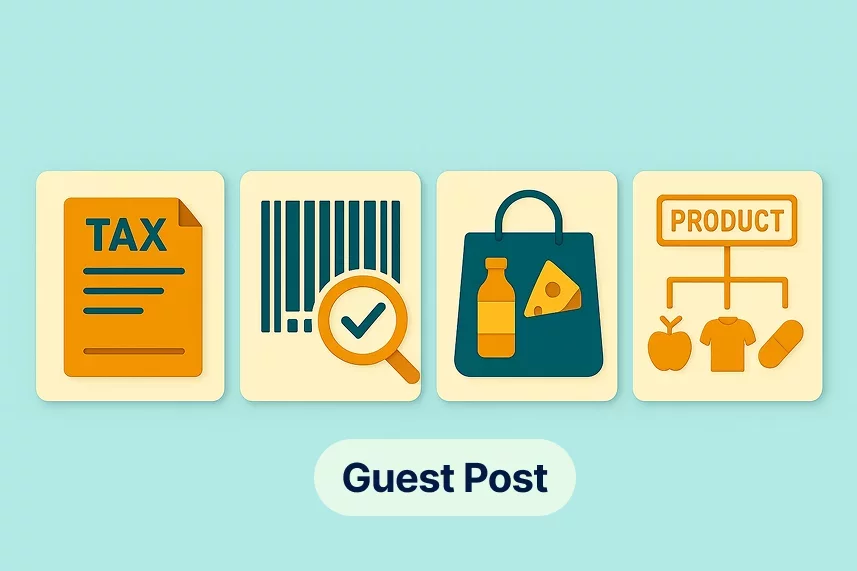VAT Deregistration Guide: Thresholds, Forms, and Process Explained

For businesses that no longer meet the criteria for VAT registration or choose to simplify their operations, the process to deregister for VAT is a critical step. This guide explores VAT deregistration, including when and how to deregister for VAT, the VAT deregistration threshold, and completing a VAT deregistration form.
What Is VAT Deregistration?
VAT deregistration is the process of formally removing a business from the VAT register. Once deregistered, the business is no longer required to charge VAT on sales, submit VAT returns, or comply with VAT-related obligations.
When Should You Deregister for VAT?
You may need to deregister for VAT under the following circumstances:
Voluntary Deregistration:
Your taxable turnover falls below the VAT deregistration threshold, which is typically lower than the registration threshold. For example, in the UK, the deregistration threshold is £88,000.
Compulsory Deregistration:
Your business stops making taxable supplies.
You close or sell your business.
You switch to trading in VAT-exempt goods or services only.
How to Deregister for VAT
If you’re wondering how to deregister for VAT, the process generally involves these steps:
Evaluate Your Eligibility: Ensure you meet the criteria for voluntary or compulsory deregistration.
Submit a VAT Deregistration Form: Complete the form provided by your local tax authority. Many countries allow businesses to submit this form online for faster processing.
Provide Supporting Information: Include details about your business turnover, taxable supplies, and the reason for deregistration.
Settle Final VAT Obligations: Ensure all VAT returns are up to date and any outstanding VAT payments are made.
What Is the VAT Deregistration Threshold?
The VAT deregistration threshold is the turnover limit below which a business can choose to deregister voluntarily. This threshold ensures that small businesses are not burdened with VAT obligations if their taxable income decreases.
Completing the VAT Deregistration Form
The VAT deregistration form typically requires the following details:
Your VAT registration number.
The date you wish to deregister.
The reason for deregistration (e.g., falling below the VAT deregistration threshold).
A final calculation of any VAT owed or reclaimable.
What Happens After You Deregister VAT?
Once you complete the process to deregister VAT:
You will receive confirmation from the tax authority, along with the effective deregistration date.
You must stop charging VAT from that date.
You may need to account for VAT on stock or assets you retain at the point of deregistration if their value exceeds a specified amount.
Advantages of VAT Deregistration
Reduced Administrative Burden: No need to file VAT returns or maintain detailed VAT records.
Cost Savings: Avoid the costs associated with VAT compliance.
Flexibility for Smaller Businesses: Easier operation for businesses below the VAT deregistration threshold.
Challenges of VAT Deregistration
Loss of Input VAT Recovery: You will no longer be able to reclaim VAT on business purchases.
Asset VAT Payments: VAT may be payable on certain assets retained post-deregistration.
Conclusion
Understanding how to deregister for VAT is essential for businesses that no longer meet the criteria for VAT registration. From completing a VAT deregistration form to considering the VAT deregistration threshold, ensuring compliance during the deregistration process protects your business from penalties. By carefully evaluating your situation and completing the necessary steps, VAT deregistration can simplify your business operations while ensuring you meet tax obligations.

Featured Insights

Angola’s E-Invoicing Mandate: Phased Implementation Continues Into 2026
🕝 December 10, 2025
VAT Deduction and Business Succession: When Do Advisory Costs Serve the Company’s Interest?
🕝 December 8, 2025
Europe’s Plastic Fiscal Shift: Why Italy’s Plastic Tax Now Starts in 2027
🕝 December 3, 2025
The Decline of Low-Value Import Exemptions: Closing Gaps in Cross-Border E-Commerce
🕝 November 20, 2025More News from World
Get real-time updates and developments from around the world, keeping you informed and prepared.
-e9lcpxl5nq.webp)
























-7xdqdopxl6.webp)



-a9bz8kz2cs.webp)






























